Kuo-Yi Lin
On Faster Convergence of Scaled Sign Gradient Descent
Sep 04, 2021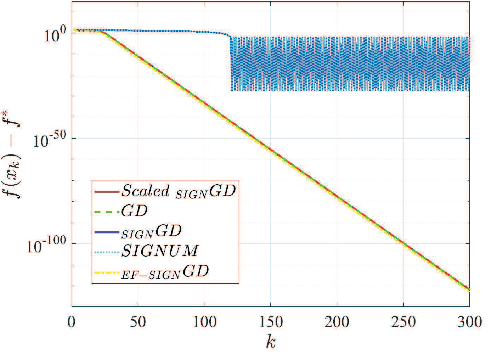
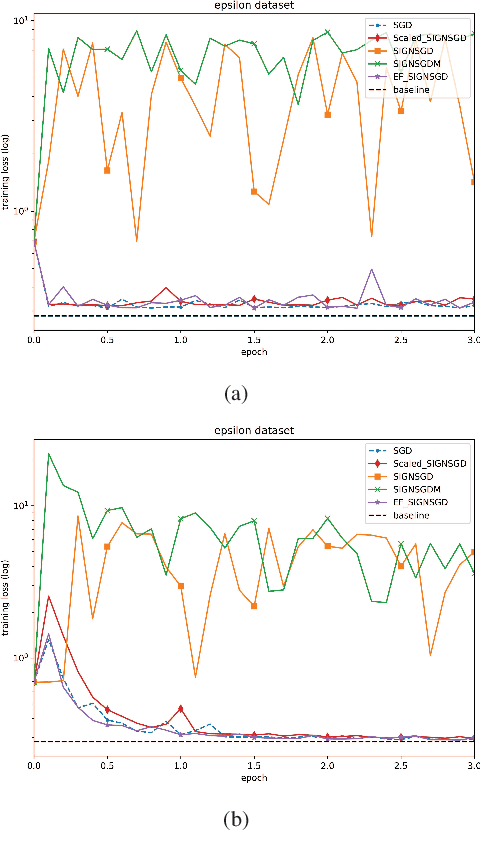
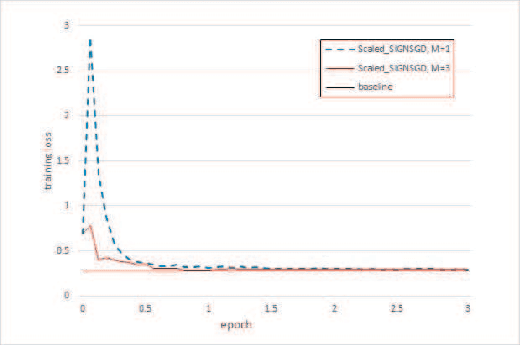
Abstract:Communication has been seen as a significant bottleneck in industrial applications over large-scale networks. To alleviate the communication burden, sign-based optimization algorithms have gained popularity recently in both industrial and academic communities, which is shown to be closely related to adaptive gradient methods, such as Adam. Along this line, this paper investigates faster convergence for a variant of sign-based gradient descent, called scaled signGD, in three cases: 1) the objective function is strongly convex; 2) the objective function is nonconvex but satisfies the Polyak-Lojasiewicz (PL) inequality; 3) the gradient is stochastic, called scaled signGD in this case. For the first two cases, it can be shown that the scaled signGD converges at a linear rate. For case 3), the algorithm is shown to converge linearly to a neighborhood of the optimal value when a constant learning rate is employed, and the algorithm converges at a rate of $O(1/k)$ when using a diminishing learning rate, where $k$ is the iteration number. The results are also extended to the distributed setting by majority vote in a parameter-server framework. Finally, numerical experiments on logistic regression are performed to corroborate the theoretical findings.
Composition and Application of Current Advanced Driving Assistance System: A Review
Jun 10, 2021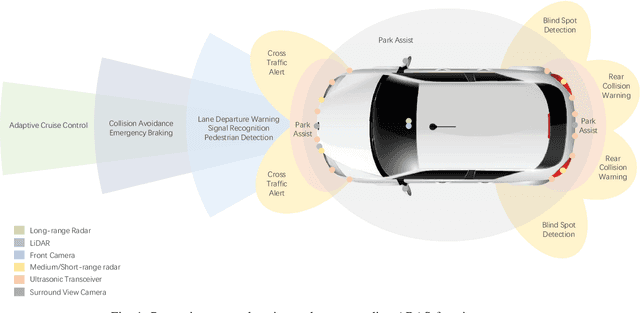
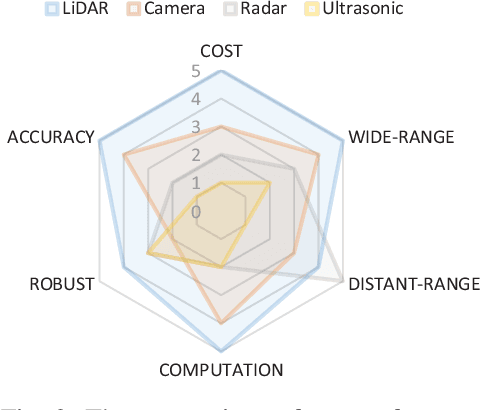
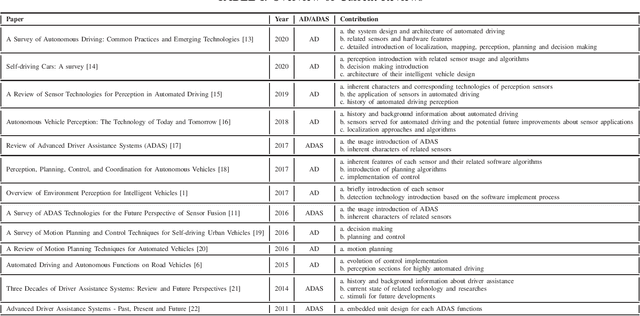

Abstract:Due to the growing awareness of driving safety and the development of sophisticated technologies, advanced driving assistance system (ADAS) has been equipped in more and more vehicles with higher accuracy and lower price. The latest progress in this field has called for a review to sum up the conventional knowledge of ADAS, the state-of-the-art researches, and novel applications in real-world. With the help of this kind of review, newcomers in this field can get basic knowledge easier and other researchers may be inspired with potential future development possibility. This paper makes a general introduction about ADAS by analyzing its hardware support and computation algorithms. Different types of perception sensors are introduced from their interior feature classifications, installation positions, supporting ADAS functions, and pros and cons. The comparisons between different sensors are concluded and illustrated from their inherent characters and specific usages serving for each ADAS function. The current algorithms for ADAS functions are also collected and briefly presented in this paper from both traditional methods and novel ideas. Additionally, discussions about the definition of ADAS from different institutes are reviewed in this paper, and future approaches about ADAS in China are introduced in particular.
Unsupervised domain adaptation via double classifiers based on high confidence pseudo label
May 11, 2021


Abstract:Unsupervised domain adaptation (UDA) aims to solve the problem of knowledge transfer from labeled source domain to unlabeled target domain. Recently, many domain adaptation (DA) methods use centroid to align the local distribution of different domains, that is, to align different classes. This improves the effect of domain adaptation, but domain differences exist not only between classes, but also between samples. This work rethinks what is the alignment between different domains, and studies how to achieve the real alignment between different domains. Previous DA methods only considered one distribution feature of aligned samples, such as full distribution or local distribution. In addition to aligning the global distribution, the real domain adaptation should also align the meso distribution and the micro distribution. Therefore, this study propose a double classifier method based on high confidence label (DCP). By aligning the centroid and the distribution between centroid and sample of different classifiers, the meso and micro distribution alignment of different domains is realized. In addition, in order to reduce the chain error caused by error marking, This study propose a high confidence marking method to reduce the marking error. To verify its versatility, this study evaluates DCP on digital recognition and target recognition data sets. The results show that our method achieves state-of-the-art results on most of the current domain adaptation benchmark datasets.
 Add to Chrome
Add to Chrome Add to Firefox
Add to Firefox Add to Edge
Add to Edge